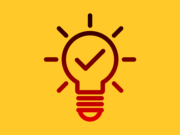Who would have imagined that telemedicine, which was long regarded to be very difficult to attain, might suddenly become a reality? Yet it has! We are expected to see more medical technological advancements and developments in 2023, therefore there is only one direction to go. Future developments in healthcare technology are predicted to lead to ground-breaking new capabilities.
You need to become familiar with these hot developments in healthcare technology and pinpoint your future areas for development if you’re interested in changing your medical practice into a high-yielding, future-proof business machine.
1. Artificial Intelligence and Machine Learning

The healthcare sector is being revolutionized by two quickly developing technologies: Artificial intelligence (AI) and Machine learning (ML). The goal of AI is to create computer systems that are capable of learning, analyzing, and solving problems — tasks that are traditionally only performed by people. Algorithms and statistical models are used in machine learning (ML), a branch of artificial intelligence, to help computers learn from data without explicit programming.
Healthcare could undergo a variety of changes as a result of AI and ML. The enhancement of diagnostic accuracy is one of the most promising applications. Medical imaging data from X-rays and MRI scans can be analyzed by AI algorithms to find patterns that may be too subtle to be seen by the human eye. This could result in earlier and more precise diagnoses of illnesses like cancer and heart disease, which could improve patient outcomes and save lives.
Recommended for you: 5 Tech Gadgets That Need Further Improvement and Innovation.
2. Virtual Reality and Augmented Reality

Another two cutting-edge technologies that have the potential to change the future healthcare technology sector are virtual reality (VR) and augmented reality (AR). While AR projects digital data onto the physical world, VR requires entirely submerging the user in a virtual environment.
Training medical professionals are one of the most exciting uses of VR and AR in healthcare. Medical professionals and students can utilize VR and AR to perform clinical procedures, model surgeries, and learn intricate anatomy and physiology in an immersive setting. This can enhance the standard of healthcare education and assist healthcare personnel in acquiring the abilities they need to deliver better patient care.
Real-time information on a patient’s health and course of treatment can be sent to them using augmented reality (AR), such as when a surgeon needs to see where a tumor is located.
3. Telemedicine and Remote Patient Monitoring

With their ability to revolutionize the way patients receive care, telemedicine and remote patient monitoring (RPM) are two rapidly expanding healthcare fields. While RPM focuses on gathering and sending patient data remotely to support clinical decision-making, telemedicine uses technology to deliver healthcare services and consultations remotely.
One of the main advantages of telemedicine and RPM is that they can improve access to care, especially for patients in rural or remote regions who might not have as much access to healthcare providers.
As an illustration, remote blood glucose monitoring for diabetic patients enables medical professionals to change medication dosages and offer instructions to help patients avoid complications.
4. Blockchain

Digital ledger technology known as blockchain makes it possible to record and keep transactions in a secure and open manner. The storage, management, and sharing of patient data in the healthcare sector could be completely changed by the use of blockchain technology.
Data security and protection for patients are one of the main advantages of blockchain in healthcare. Data is encrypted and made tamper-proof by blockchain, which makes use of cryptographic methods.
In addition to protecting patient information’s confidentiality and privacy, this can assist in preventing data breaches.
Improving data sharing is one more advantage of blockchain in the healthcare industry. It can be challenging for healthcare providers to share patient data because they frequently use various electronic health record (EHR) systems that might not be compatible with one another. By building a decentralized system that allows authorized users to access patient data regardless of the EHR system they use, blockchain can facilitate safe and effective patient data sharing between providers.
5. Nanotechnology
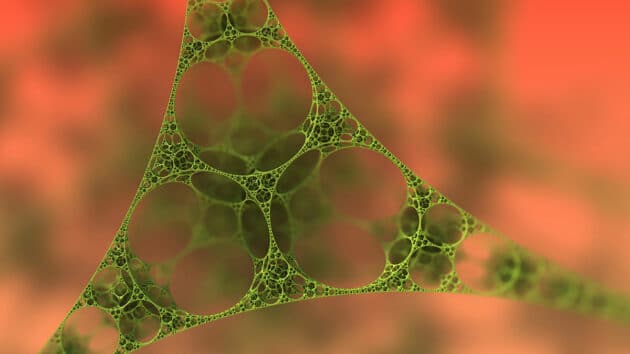
Designing, creating, and utilizing objects and materials with a nanometer scale affects nanotechnology. Nanotechnology has the ability to fundamentally alter how diseases are identified, managed, and prevented in the field of healthcare.
Being able to transport medications and treatments directly to the target site is one of nanotechnology’s main advantages in healthcare. To transport drugs more precisely and lower the chance of side effects, nanoparticles can be made to specifically target particular cells or tissues in the body. In order to reduce harm to healthy cells and increase the effectiveness of the treatment, nanoparticles can be used to transport chemotherapy drugs directly to cancer cells.
The development of more precise and sensitive diagnostic tools is also possible with the help of nanotechnology. The detection of illness biomarkers in blood or other bodily fluids can be done using nanoparticles as biosensors. With earlier and more precise diagnoses provided by these tests, earlier interventions and improved results are possible.
6. 3D Printing

In 3D printing, materials are layered on top of one another to produce three-dimensional things based on a digital design. The creation and usage of medical implants and equipment could be revolutionized by 3D printing in the healthcare industry.
The capacity to design personalized and patient-specific medical implants and gadgets is one of the main advantages of 3D printing in healthcare. By combining medical imaging data to construct a digital model of a patient’s anatomy, 3D printing can produce implants and prostheses that suit the patient’s specific anatomy more accurately, increasing outcomes and lowering the risk of problems. For individuals with limb differences or spinal injuries, 3D printing, for instance, can be utilized to build specialized orthotics or prosthetics.
You may like: New Tech Innovations for the Non-Tech Industries.
7. Gene Editing

With the aid of the technology known as gene editing, researchers may precisely alter an organism’s DNA. The way we approach healthcare and the treatment of diseases could be drastically changed by this technology.
CRISPR-Cas9, one of the most well-known gene editing techniques, employs a bacterial enzyme to cut and alter particular DNA sequences. With the use of this technology, genetic abnormalities that result in illnesses like sickle cell anemia and cystic fibrosis could be fixed.
New cancer medicines can also be created using gene editing. Scientists can develop treatments that specifically target cancer cells while sparing healthy cells from harm by altering the DNA of cancer cells.
8. Internet of Medical Things
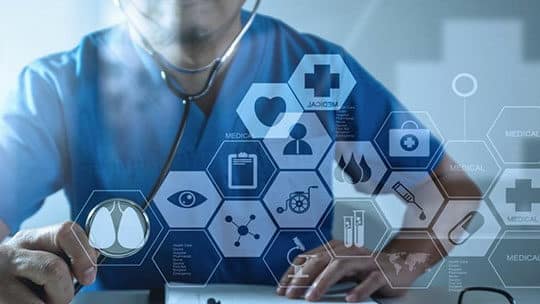
The term “Internet of Medical Things” (IoMT) refers to a network of connected medical apps and devices that may gather, transmit, and analyze patient data in real time. By enhancing patient outcomes, lowering costs, and boosting efficiency, IoMT has the potential to alter the way healthcare is provided.
The capacity to remotely and in-real-time monitor patients is one of the main advantages of IoMT. This enables medical professionals to spot potential health problems early, act before they worsen, and deliver more individualized care.
9. Sustainability and Decarbonization

As part of the global pressure toward a more sustainable future, healthcare is making efforts to better the environment, such as through providing ecolabelling. Anywhere in the globe, eco-labeling is utilized as a voluntary way of environmental performance certification and labeling. A product or service that has been proven to be more environmentally friendly is highlighted by an ecolabel in a particular category.
As a result, businesses invest in eco-friendly label printer solutions for laboratories, clinics, hospitals, and the healthcare sector. The ability to print professional pressure-sensitive labels containing account/patient information, medication information, medical alerts, cage cards, and more makes these printers helpful for medical professionals as well.
10. Robotics to Automate Hospital Workflows
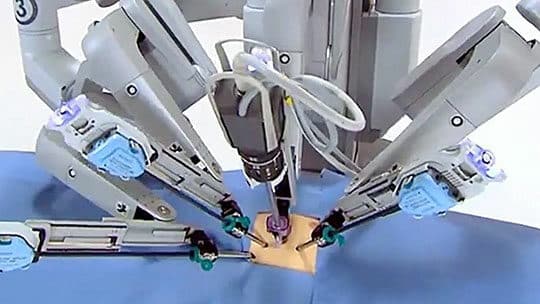
In order to potentially reduce the cost of recruiting trained medical staff, startups all over the world have started to invest hundreds of millions of dollars in the development of AI projects, including various kinds of robotic systems.
Replacing people with machines is not to increase unemployment and lower social standards, the goal is to assist medical facilities, which already face a severe shortage of nurses and physicians.
Modern medicine has an almost endless potential for using robotic assistants and automated systems, including in surgery, cleanliness, and remote diagnostics, but the healthcare system’s top goals will always be the well-being of medical personnel and the successful treatment of patients.
To achieve a powerful fusion of the present and the future, robotic and AI-driven technologies will be employed to complement established processes rather than replace them.
Future Healthcare Technologies
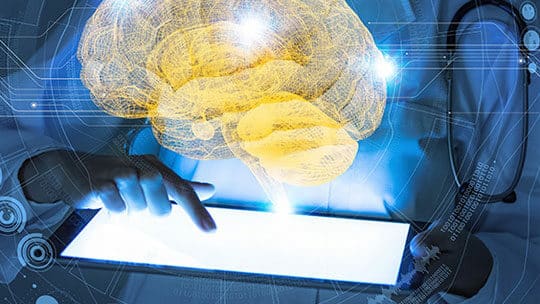
In the next ten years, the global modern healthcare system will be dominated by a number of significant emerging technologies in the healthcare industry, which we have examined in this article.
The focus is generally on improving the consumerization of healthcare and affordability of healthcare services by predicting and preventing diseases instead of treating them at advanced stages. Medical technology transformations are expected to have a significant impact on the field of medicine in the near future. We believe there will be more development in future healthcare technologies.
You may also like: 5 Ways Digital Innovation is Transforming the Future of Logistics.
Conclusion

Improvements in healthcare, one of the most important industries, frequently result in the treatment of rare diseases. Mainly due to technological advancements in the medical industry that enabled a better understanding of humanity.
New opportunities for patients and medical professionals to live in a more sustainable world and cure even previously incurable illnesses are made possible by the use of technology in medical applications. Artificial intelligence (AI), machine learning, virtual care, and the Internet of medical things, to name a few, will rule the future of healthcare technologies over the next ten years.
